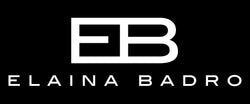Mon, Jun 10, 2024
Why Choose Talc-Free Makeup Products: Expert Insights from Elaina Badro
Introduction
The use of talc in makeup and beauty products has sparked several safety concerns, prompting a shift toward safer alternatives. This article explores the reasons behind these concerns, the potential health risks, and the efforts made by brands like Elaina Badro to offer talc-free cosmetics.
The Shift to Talc-Free Makeup
From eyeshadows to foundations, talc has raised significant safety concerns in the beauty industry. Many makeup products have overlooked strict ingredient guidelines in favor of profits, resulting in safety issues.
Elaina Badro has tackled this problem by developing non-toxic binding agents to replace talcum powder, enabling a transition to cleaner, safer beauty products. By choosing talc-free makeup, you can enjoy a healthier beauty routine with greater peace of mind.
Safety Concerns Surrounding Talc in Makeup
Health Risks
Talc is a mineral composed of magnesium, silicon, and oxygen. Some talc contains asbestos, a known carcinogen. Although cosmetic-grade talc is required to be asbestos-free in many countries, instances of contamination have occurred. Prolonged exposure to asbestos-containing talc has been linked to respiratory issues and certain cancers.
Skin Irritation
Talc particles are very fine and can easily become airborne. When inhaled or applied to the skin, talc particles can cause irritation, especially in people with sensitive skin or allergies.
Clogging Pores
Talc has a texture that can clog pores, leading to breakouts and acne, particularly for individuals with oily or acne-prone skin.
Environmental Concerns
The mining and processing of talc can have environmental implications, including habitat destruction, water contamination, and energy consumption.
Talc and Asbestos Contamination

Asbestos and talc are minerals that tend to develop under similar conditions and can often be found in close proximity in the earth's crust. Historically, talc deposits have been contaminated with asbestos fibers, particularly in natural deposits. This contamination has led to several lawsuits in recent years, alleging that prolonged exposure to asbestos-contaminated talc in cosmetics has caused vision irritation, respiratory issues, and even lung disease. Asbestos is a known carcinogen, linked to serious health risks, including lung cancer, ovarian cancer, and mesothelioma.
Search for talc-free alternatives to avoid these risks altogether.
Legal Cases and Studies
Numerous studies and legal cases have examined the potential link between talc use and asbestos-related diseases. For instance, Johnson and Johnson settled numerous lawsuits related to talc in baby powder. Regulatory agencies like the U.S. Food and Drug Administration (FDA) and the European Union's Scientific Committee on Consumer Safety (SCCS) continue to monitor the safety of talc-containing products.
Elaina Badro's Talc-Free Approach
Elaina Badro and her R&D team in Italy have developed makeup products without using talc powder, addressing the following concerns:
Non-Toxic Binding Agents
By finding non-toxic binding agents to replace talcum powder, Elaina Badro ensures that her products are safer and healthier for consumers.
Commitment to Consumer Safety
Elaina Badro's commitment to consumer safety is evident in her determination to create a full line of high-performance cosmetics without talc. Her brand has remained a model of integrity for over a decade, prioritizing the health and well-being of its users.
Why Should You Choose Talc-Free Makeup Products
Choosing talc-free makeup products is a proactive step towards a healthier beauty routine. Talc-free products eliminate the risks associated with asbestos contamination and reduce the likelihood of skin irritation and clogged pores. Moreover, opting for talc-free alternatives supports environmentally conscious brands that prioritize safe and sustainable ingredient sourcing.
What to Look for in Talc-Free Makeup Products
When searching for talc-free makeup products, consumers should pay close attention to ingredient lists and certifications. Look for products labeled as "talc-free" and check for alternative ingredients like cornstarch, rice powder, or kaolin clay, which are safe and effective substitutes. For those seeking talc-free eye makeup, ensure the products are formulated to be gentle on the delicate eye area while still providing desired performance. Additionally, when choosing talc-free makeup powder, verify that it offers the same smooth application and finish without the risk of irritation or clogged pores.
Choose brands that are transparent about their sourcing and manufacturing processes, and seek out certifications from reputable organizations that verify the product's safety and quality. It's also beneficial to read reviews and look for feedback from other consumers who prioritize clean beauty. By being diligent and informed, you can confidently choose talc-free makeup products that align with your health and safety standards.
Brands like Elaina Badro are leading the way, offering high-quality, talc-free cosmetics that prioritize safety and performance.
By making the switch, consumers can enjoy peace of mind knowing they are using products that are both safe and effective.





Leave a comment